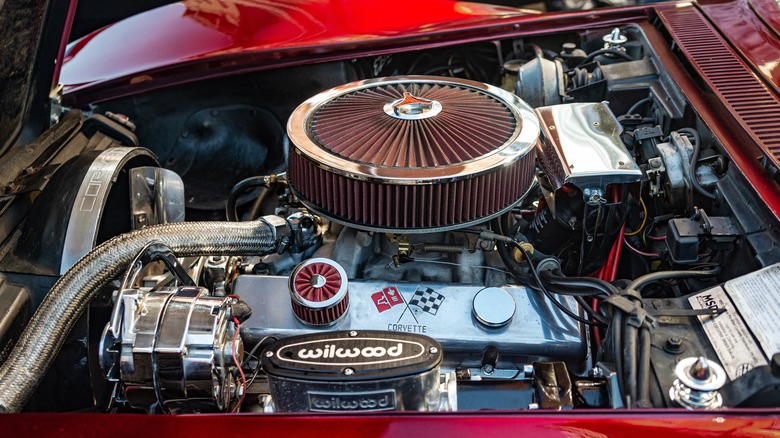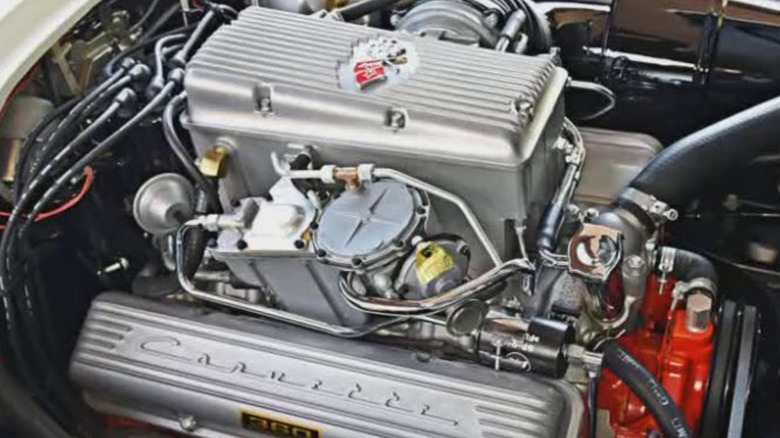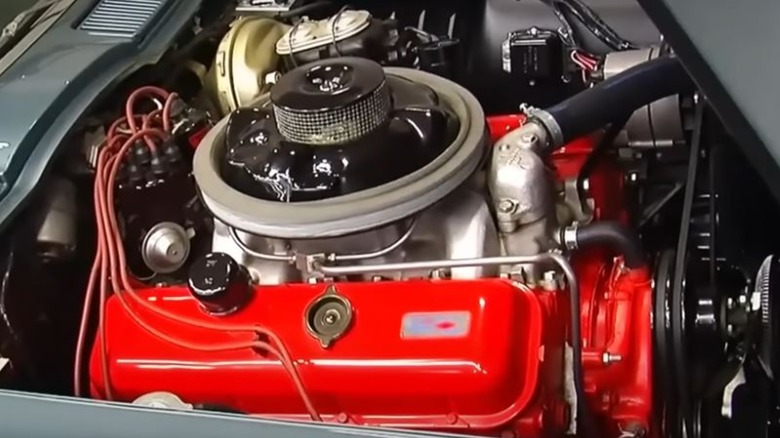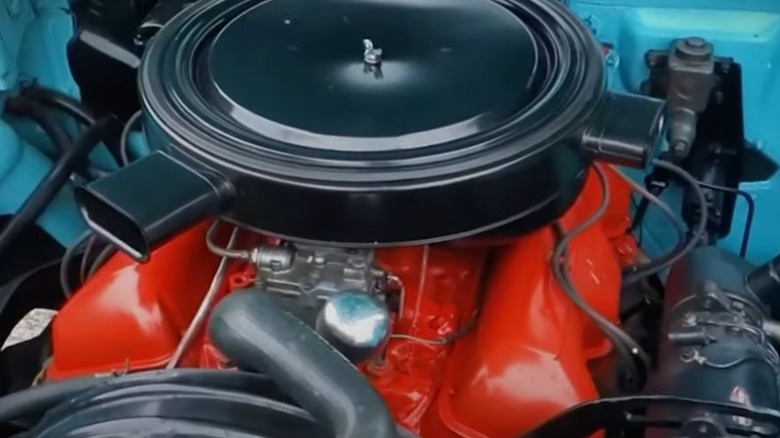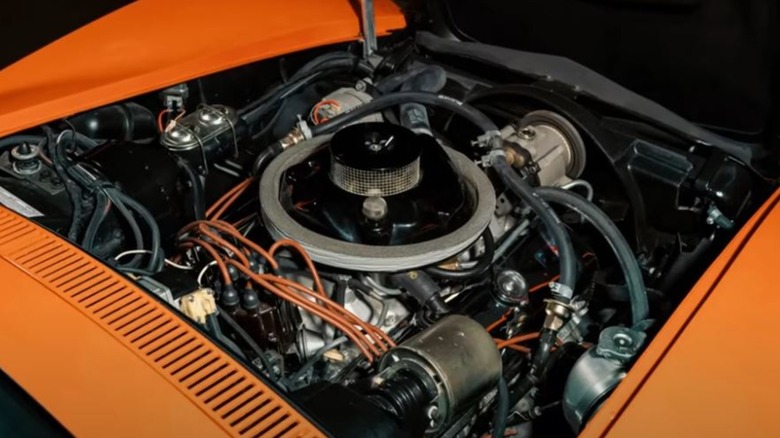5 Of The Rarest Engines Ever Built By Chevrolet
As one of the world's biggest car companies, Chevrolet sells an enormous number of vehicles every year – 1,745,809 in the United States in 2024 alone. Currently offering 24 models, Chevrolet offers a wide range of reliable engines, from a 1.2L Ecotec Turbo in the Trax SUV to the 6.2L supercharged V-8 in the Corvette Stingray.
Despite the huge volume of cars and engines Chevrolet produces every year, there were Chevrolet engines that came out in limited quantities. The potential reasons why these engines are rare include a limited production run, special orders, the high cost of manufacture, becoming outdated, being too expensive, or simply a lack of appeal or not having sold well, which is most often the case.
Alongside their scarcity, these rare engines sometimes come with unique features not available with more common versions, or have some historical significance because they're special or limited editions. All these factors combined have helped to substantially increase the value of the cars these engines are attached to, making them several times more expensive today than their normal versions.
1963 Chevrolet Corvette Z06 L84 5.4L V-8
When Chevrolet launched the Corvette in 1953, it was not an immediate success, selling only 183 of the 300 made during its first year. Things, however, took off for the brand in 1955 when its then-new engineer, Zora Arkus-Duntov, upgraded its engine to a V-8 that gave the car better performance and attracted more buyers. By 1963, when the second-generation Corvette was launched, the now chief engineer Arkus-Duntov again played a pivotal role in its development when he created the very first Z06 option for the Corvette as a high-performance variant that could be used on the track.
Arkus armed this Corvette with the new L84 engine; it was a fuel-injected, 327-cubic-inch 5.4L, V-8 able to generate 360 horsepower, which let the car reach 142 mph. This new power plant was much faster and more powerful than its first-gen predecessor, whose first engine offered just 195 horsepower with a top speed of only 120 mph.
The Z06 was available until 1967, with the L84 V-8 as the only engine option, but during the four years it was on sale, only 199 were made by Chevrolet. Already a rare model, there is an even more uncommon version of the Z06 called the Big Tank, with an optional 36-gallon gas tank, compared to the standard 20-gallon tank Chevrolet offered for the Z06 in 1963. Designed for endurance racing like Daytona and Sebring, only 63 of these were made out of 199 Z06's Corvettes. That rarity results in premium prices today, averaging nearly $500,000 – almost four times the price of the Small Tank version that sells for $125,000.
1967 Corvette Stingray L88 427 V-8
Again developed under Arkus-Duntov's guidance, the Corvette Stingray L88 first came out in 1967, and was produced until 1969, which meant that both the second- and third-generation Corvettes had this engine option. Built as a more powerful engine option for the then-current model Corvette, the L88 was a limited-production offering not actively marketed to the public — Chevrolet dealers instead promoted the standard 350 powerplant. While the L88 was listed as a Regular Production Order code, Chevy had safety concerns arising from its powerful specifications that were meant for racing and track use. Chevrolet believed the car wasn't suitable for less skilled drivers looking at the Corvette for normal use.
The official power rating attributed to the L88 was 430 hp, but this was an intentional deception meant to dissuade buyers, and instead the output was about 550 hp. The L88 required 103-octane fuel and was capable of a top speed of 171 mph. In the three years it was available, only 216 cars were made with the L88, and because of its rarity and performance attributes, these now command premium prices, with the Stingray version estimated to fetch more than $3 million, and the third-gen variant having recently sold for $759,000. Both dwarf the average prices for standard second-generation Corvettes at just under $79,000 and third-gen Corvettes at $21,000 to $57,000.
1969 Camaro ZL1 427 7.0L V-8
Debuting in 1966, the first-generation Camaro was Chevrolet's response to the success of the Ford Mustang, launched two years earlier. The first Camaros came with several engine configurations, starting with the entry-level inline-6, which had 140 horsepower, and V-8s that went from 210 up to 375 horsepower. Buoyed by the Camaro's success, Chevy soon added more engine options, and by 1969, the Camaro had an incredible 14 configurations available.
For the Camaro's inaugural version, Chevrolet offered a choice of four model trims — Standard, Rally Sport, Super Sport, and Z/28 – but in 1969, a new, much more powerful variant was introduced. The ZL1 Camaro was the result of Chevrolet dealer Fred Gibb, who wanted to create a new Camaro performance package using the track-proven 427 V-8 engine. Developed for the Can-Am and other track-focused uses, the 427 was never intended for use in a regular production model, but Gibb exploited a loophole in Chevy's ordering system to facilitate his request.
Although Chevy produced nearly 700,000 first-generation Camaros, only 69 ZL1 Camaros had the 427 V-8. Entirely made of aluminum, the 427 Big Block V-8 produced 500 horsepower and 449 pound-feet of torque, which let the ZL1 reach the quarter-mile in only 11.64 seconds. This massive boost in performance made the ZL1 Camaro expensive, and its sticker price was over $7,200, 2½ times the $2,727 for the base V-8 coupe. But this pales compared to what a pristine ZL1 sells for today – one recently sold for $825,000, an amount 16 times the $50,000 average for a same-vintage standard V8 Camaro.
1963 Impala Z11 427 V-8
In 1962, Chevrolet initiated a new engine-development program when a key executive of Chevy's performance department, Vince Piggins, sent an internal order that mandated the development of the existing 409-cubic-inch-displacement crank engines into 427-cubic-inch engines. Divided into two versions, Mark I and Mark II, these new engines were initially dubbed "mystery engines" and were planned to be installed in 50 examples of the 1963 Impala SS Sport Coupe. These higher-spec Impalas were also to incorporate sheet aluminum to allow greater weight reduction, a feat they achieved as the production model weighed 300 pounds less than the standard 409-engined Impala.
In less than a year, Chevrolet debuted these mystery engines in two 1963 Z06 Corvettes during the 1963 Daytona 500. In the same year, Chevrolet introduced a special-order option package for the Impala, the Z11, which featured a 427-cubic-inch version of the standard 409, making 430 horsepower and 575 pound-feet of torque.
Available for only one year, the Z11 Impala with the 427 V-8 engine is one of the rarest Chevrolets produced, and it is believed that only 57 examples were made. It's estimated that fewer than 50 still exist, and this may be the reason why their prices have gone up considerably, because while the standard Impala averages a bit over $50,000 today, a Z11 version managed to sell for $525,000 in an auction in 2017.
1969 Corvette ZL1 L88
For over 70 years, the Chevrolet Corvette, with its sports-car design and performance characteristics, has been considered the American answer to the European exotics Ferrari, Porsche, and Jaguar. There have been several exceptional Corvette models, but some versions are above extraordinary. The 1969 ZL1 C3 Corvette Stingray was a special-edition model that featured an all-aluminum version of the L88 engine called the ZL1, a 427-cubic-inch big-block V-8 that produced 560 horsepower, a stunning 130 more than the stock L88.
As a race-ready engine, the ZL1 came with numerous features not found on the original L88, including a dry-sump oil system, magnesium oil pan, ported heads, aluminum roller-tipped rocker arms, which resulted in better airflow and more power. Some 94 ZL1 engines for Corvettes were made, with 80 coded for manual transmissions and 14 for automatics. Most were sold to racing teams, but a few went over dealers' parts counters to private parties. Two were sold to the public.
Of the two Corvettes that went to the public, only one has been found with the documentation to certify it as an original ZL1 C3 Corvette. Prices for same-year model ordinary third-generation Corvettes average around $62,000, but the ultra-rare Monaco Orange convertible ZL1 recently sold for $3.14 million, making it not just the rarest Chevrolet-engined car, but one of the most expensive as well.
